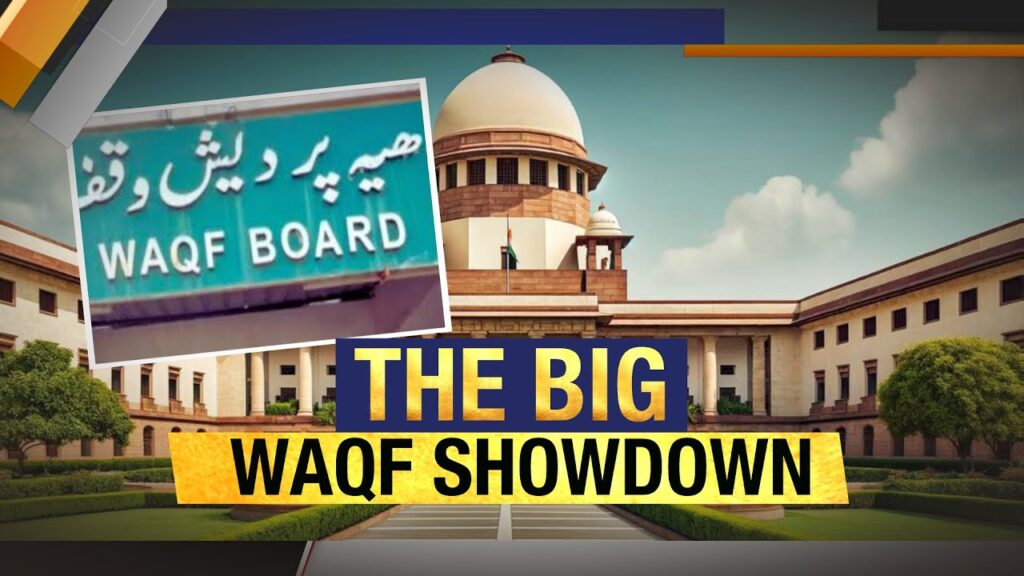By K Raveendran
The Supreme Court’s interim order on the controversial Waqf Amendments Act has created an unusual equilibrium among opposing camps, hinting at a calculated balancing act rather than a decisive intervention. While the order does not represent a full-fledged stay on the implementation of the amendments, it introduces a layer of judicial restraint that both reassures and unsettles, depending on which side one is on. It leaves the legal battlefield open, but the signs—however faint—point toward an eventual consolidation of the government’s position. By allowing the government time to marshal more robust arguments while maintaining the status quo, the court has set the stage for a more thorough examination that could eventually legitimise the amendments in question.
From the government’s perspective, this interim arrangement is not just acceptable—it is advantageous. It allows it to shift the debate from the theoretical to the empirical by showcasing concrete flaws in the existing legal framework. Reports of entire villages being designated as Waqf properties, often without the knowledge or consent of the inhabitants, have created a groundswell of frustration that the government intends to amplify before the court. By framing the issue as one of mass disenfranchisement and systemic opacity, the government is crafting a narrative not just of administrative necessity, but of social justice. And crucially, this narrative is likely to resonate with a court that has shown, in previous verdicts, an inclination toward balance and pragmatism over doctrinaire interpretations of the law.
Equally telling is the fact that while the court did not stay the operation of the amended law, it warned against altering the status quo during the pendency of the litigation in a way that would prejudice the rights of either party. This serves a dual purpose. For the challengers, it prevents the government from going ahead and implementing changes that could render the legal challenge meaningless. But for the government, it still leaves the door open to continue building its case, gathering data, and framing the amendment as a necessary corrective to long-standing injustices under the previous system. The very wording of the court’s direction reflects a reluctance to take drastic interim steps that could tie its hands when it comes time for the final verdict.
What emerges from this situation is a kind of judicial hedging—enough ambiguity to give hope to the challengers, but enough room for the government to manoeuvre. The challengers have certainly found solace in certain observations made by the court, which hinted at a degree of sympathy for the rights of those adversely affected by the amendments. But this solace may ultimately prove to be more rhetorical than substantive. The court’s history suggests that unless the law in question is patently unconstitutional or egregiously unjust, it tends to defer to the legislative and executive branches, particularly when broader governance issues are implicated.
The government’s strategic alignment with new intervenors like the Christian Alliance & Association of Social Action further strengthens its hand. These groups argue that the previous law had been weaponised to dispossess individuals—often from other minority communities—of their legitimate property rights, cloaked under religious or institutional claims. By rallying such voices, the government is recharacterizing the law not as a majoritarian imposition, but as a secular, inclusive reform. This repositioning is significant. It converts the issue from a narrow administrative tweak into a moral crusade to restore property rights and correct historical imbalances. The judiciary, when faced with such moral framing—especially if substantiated by real-life testimonies and statistics—is often swayed toward preserving the legislative intent unless a strong constitutional violation is proven.
Procedural concerns or even instances of perceived overreach under the new law may not be enough to invalidate it unless a clear pattern of arbitrariness or targeted discrimination can be shown. So far, the challengers have leaned heavily on the risk of potential misuse rather than documented cases of actual harm. In contrast, the government is focusing on the existing system’s failings, which are already tangible and demonstrable. This asymmetry in the quality and nature of evidence could weigh heavily in the final adjudication.
Furthermore, the language of the court’s interim observations suggests a deep awareness of the potential complexities that could arise from prematurely interfering with the legislative process. By emphasizing that no new complications should be introduced during the pendency of the case, the court appears to be buying time—not to strike down the law, but to give it a fair hearing without causing disruption. This cautious approach, while seemingly neutral, often works in favour of the status quo or, in this case, the newly introduced changes. Once a law has had time to settle into the system—even in a provisional capacity—it becomes institutionally more difficult to reverse unless there is an overwhelming reason to do so.
Additionally, the court is likely to be influenced by the increasing number of voices backing the amendments, particularly those from marginalized communities and social advocacy groups. These stakeholders bring with them a degree of moral and socio-political legitimacy that is hard to ignore. Their narratives of exclusion and dispossession under the previous regime of laws introduce an emotional and human dimension to what might otherwise be an abstract legal contest. If the challengers cannot present a comparably compelling counter-narrative—one that transcends legal technicalities and speaks to justice in a visceral way—the pendulum will continue to swing in favour of the government. (IPA Service)




 BJP Disavows MPs’ Supreme Court Criticism Amid Internal Tensions
BJP Disavows MPs’ Supreme Court Criticism Amid Internal Tensions 